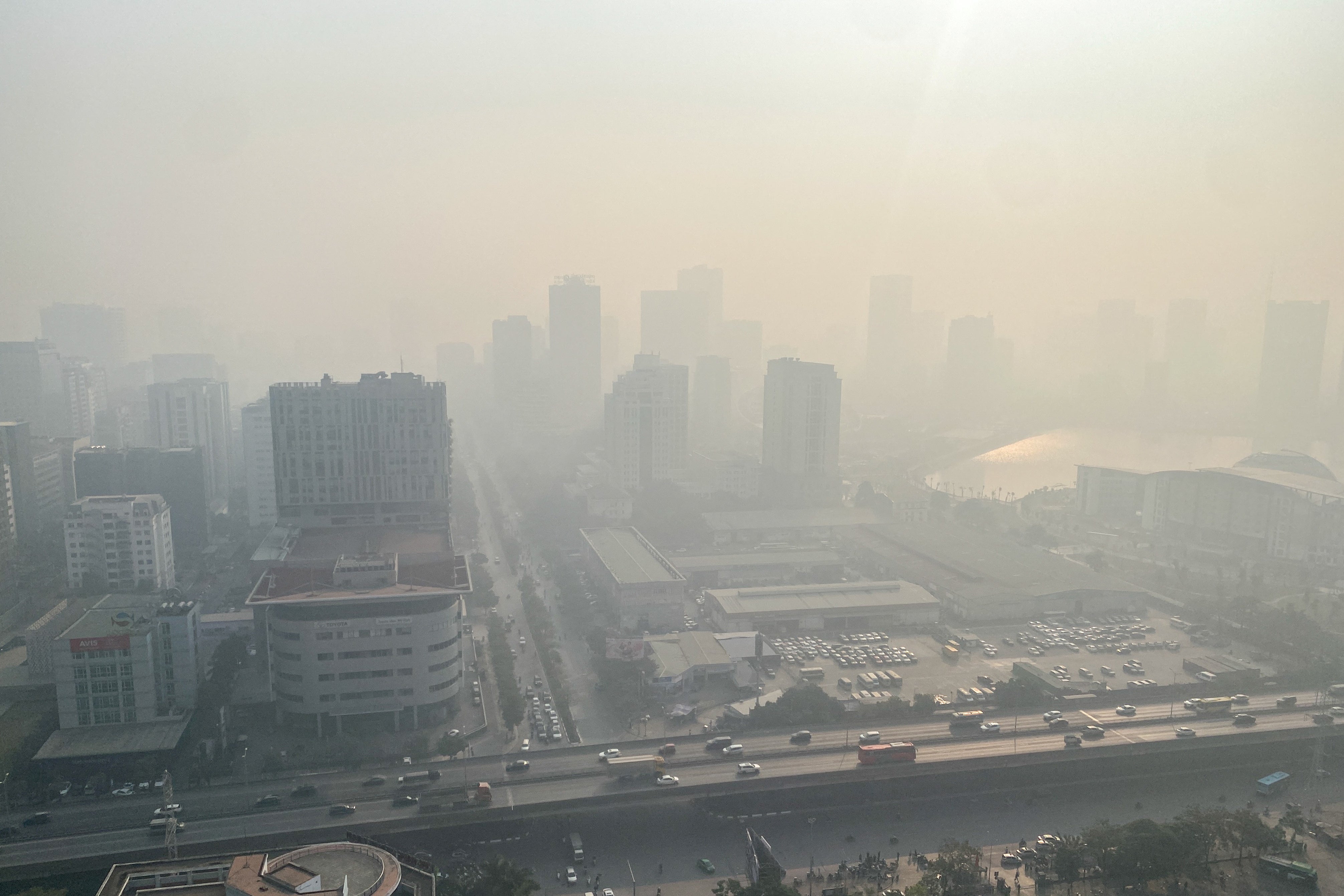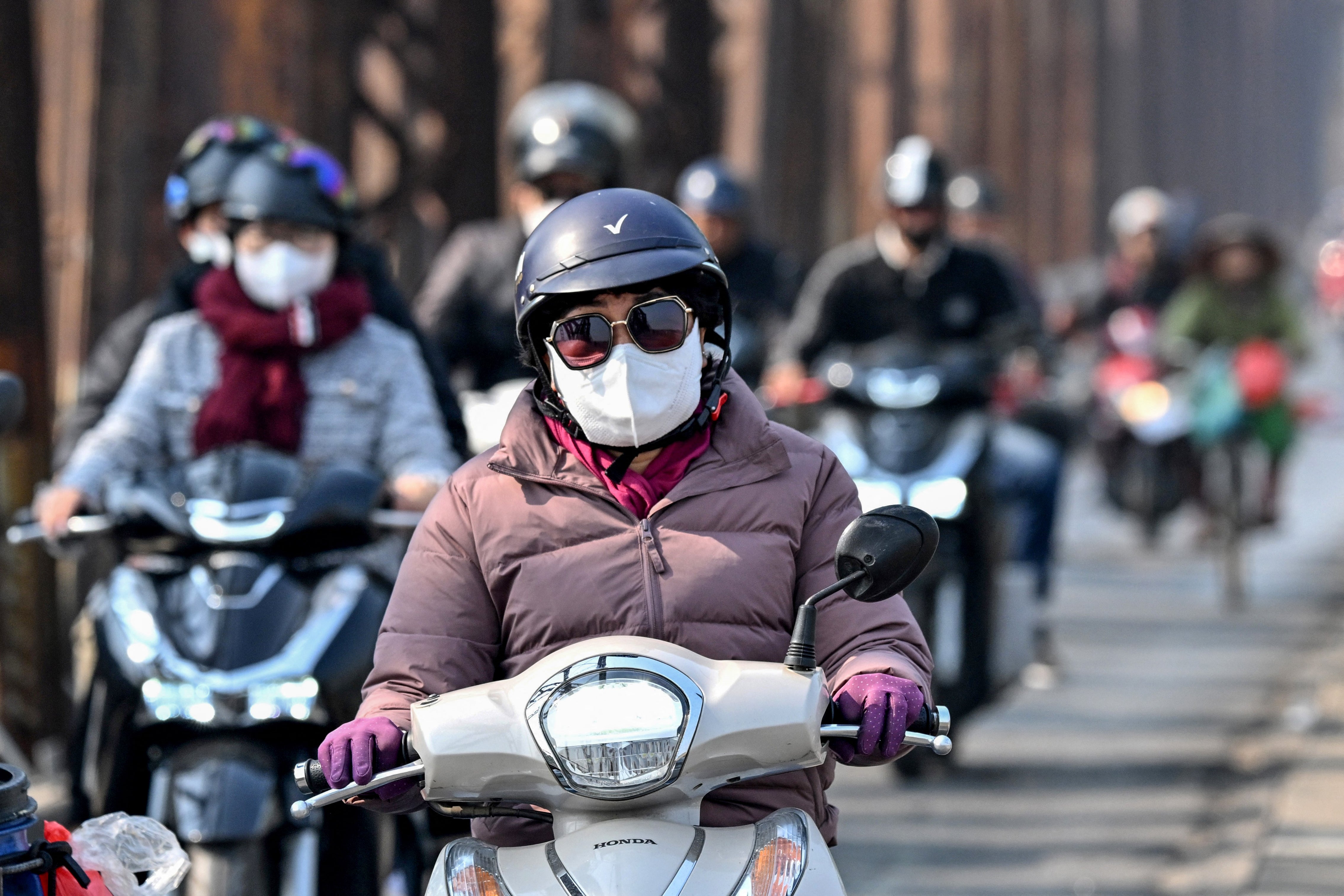Inside one of the world’s most polluted city covered by toxic smog
The smog is caused by traffic and trash burning

Your support helps us to tell the story
From reproductive rights to climate change to Big Tech, The Independent is on the ground when the story is developing. Whether it's investigating the financials of Elon Musk's pro-Trump PAC or producing our latest documentary, 'The A Word', which shines a light on the American women fighting for reproductive rights, we know how important it is to parse out the facts from the messaging.
At such a critical moment in US history, we need reporters on the ground. Your donation allows us to keep sending journalists to speak to both sides of the story.
The Independent is trusted by Americans across the entire political spectrum. And unlike many other quality news outlets, we choose not to lock Americans out of our reporting and analysis with paywalls. We believe quality journalism should be available to everyone, paid for by those who can afford it.
Your support makes all the difference.Vietnam’s capital Hanoi has been covered in thick smog over recent weeks, putting it at the top of a list of the world’s most polluted cities, as the government said it would push for more electric vehicles (EVs) to alleviate the problem.
Levels of hazardous small particles, known as PM2.5, were measured at 266 micrograms per cubic metre in Hanoi early on Friday, the highest reading among a list of most-polluted cities, according to AirVisual, which provides independent global air pollution information via a phone app. The ratings change daily.
PM2.5 particles are floating particulate matter in the air measuring 2.5 micrometers in diameter or less. It is so small it can be absorbed into the bloodstream upon inhalation
A guide to PM2.4
According to www.iqair.com
Where does it come from?
- Combustion resulting from power plants
- Smoke and soot from wildfires and waste burning
- Vehicular emissions and combustion from motors
- Industrial processes involving chemical reactions between gases (sulfur dioxide, nitrogen oxides, and volatile organic compounds)
How does it affect our health?
Short term effects:
- Irritation to the eyes, throat, and nose
- Irregular heartbeats
- Asthma attacks
- Coughing, chest tightness, and shortness of breath
The Southeast Asian country, a regional manufacturing hub with one of the fastest-growing economies in Asia, has reported severe air pollution in its major cities for years, particularly in Hanoi.
The thick smog is mostly caused by heavy traffic, trash burning and industrial activities.
Hanoi map:
“We the elderly can feel it very clearly when we suffer from respiratory problems that lead to breathing difficulties,” Luu Minh Duc, a 64-year-old resident of the city, said. “The situation seems to get worse recently.”
Young people are also complaining.
“At first I thought it was foggy ... but later I found out that it is actually fine dusts that reduce my vision and make me feel like it is not healthy to breathe,” said the 21-year-old student Nguyen Ninh Huong.

Speaking at a meeting with the transport ministry on Thursday, Deputy Prime Minister Tran Hong Ha called for an accelerated transition to electric vehicles (EVs) as part of the efforts to reduce pollution, state media reported.
So far Hanoi has a target for at least 50% of buses and 100% of taxis to be EVs by 2030.
“This is the responsibility of the state to the people, and there must be specific and timely actions,” Ha was quoted as saying by the Tien Phong newspaper.
The ministries of natural resources, environment and health did not immediately respond to Reuters’ requests for a comment.
Join our commenting forum
Join thought-provoking conversations, follow other Independent readers and see their replies
Comments